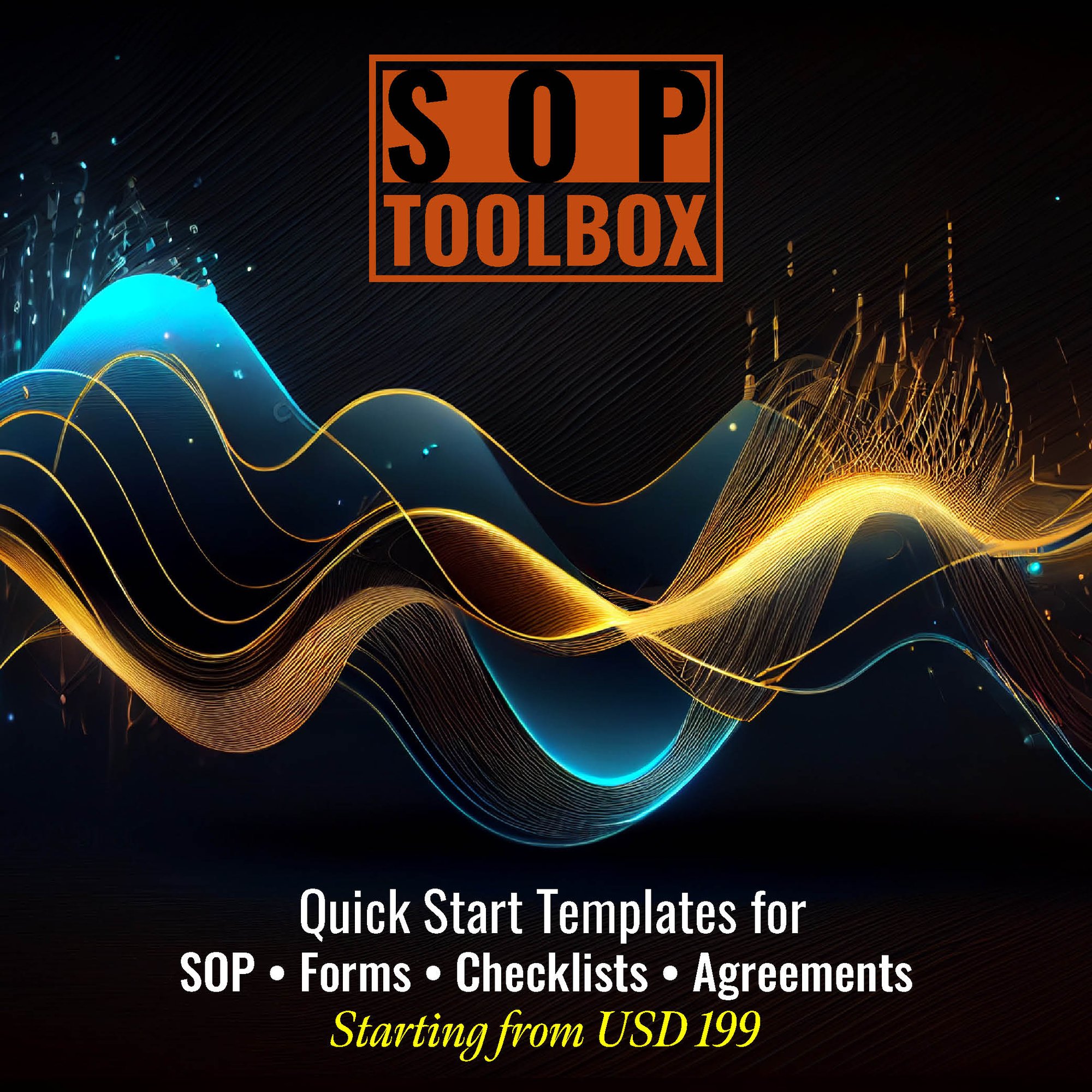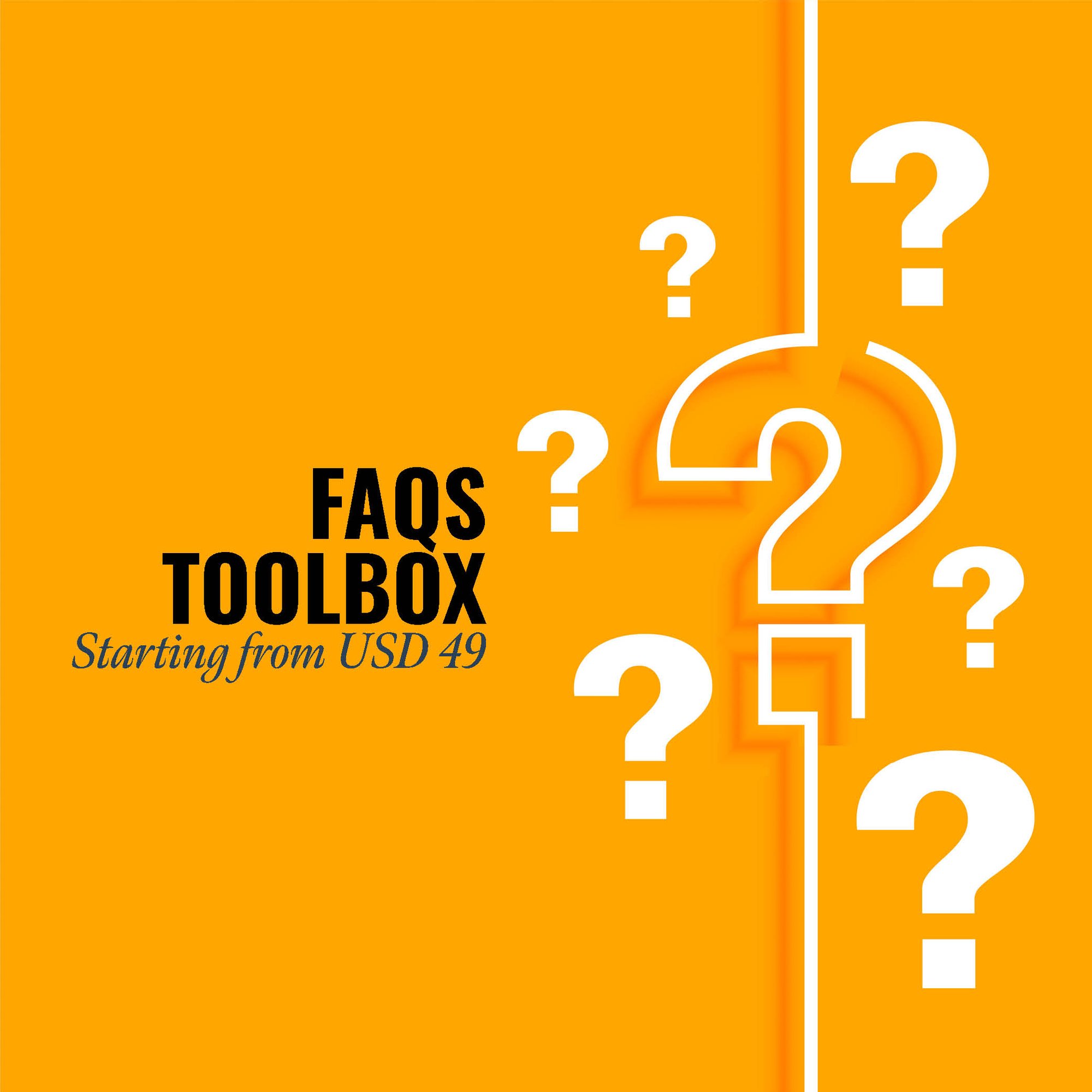The distinction of an SOP (Standard Operating Procedure) Manual for Cotton Farming is evident in its ability to establish systematic and standardized practices essential for the efficiency, sustainability, and productivity of cotton cultivation. Firstly, the manual provides comprehensive guidelines for land preparation, planting, and crop maintenance, ensuring consistency and quality in the cotton farming process.
Secondly, it serves as a crucial training resource, ensuring that farm personnel understand and adhere to best practices, safety protocols, and pest management techniques. This contributes to a skilled and knowledgeable agricultural workforce.
Thirdly, the SOP manual aids in risk management by outlining procedures for irrigation, pesticide use, and weather-related challenges, mitigating potential issues related to crop health and yield.
Moreover, the manual supports regulatory compliance, helping cotton farms align with agricultural standards, environmental regulations, and safety guidelines. This is crucial for maintaining the integrity, sustainability, and legal compliance of cotton farming operations. In essence, the SOP Manual for Cotton Farming distinguishes itself by optimizing operations, ensuring quality, and navigating the complexities of cotton cultivation.
CLICK HERE to download the List of SOPs Document in PDF format. Please share this document with your clients, colleagues and senior officers.
Top 50 Standard Operating Procedures (SOPs) for Cotton Farming
SOP-302-001: Standard Operating Procedure for Cotton Farming Soil Preparation
SOP-302-002: Standard Operating Procedure for Cotton Farming Seed Selection
SOP-302-003: Standard Operating Procedure for Cotton Farming Planting
SOP-302-004: Standard Operating Procedure for Cotton Farming Irrigation
SOP-302-005: Standard Operating Procedure for Cotton Farming Fertilization
SOP-302-006: Standard Operating Procedure for Cotton Farming Weed Control
SOP-302-007: Standard Operating Procedure for Cotton Farming Pest Management SOP-302-008: Standard Operating Procedure for Cotton Farming Disease Control
SOP-302-009: Standard Operating Procedure for Cotton Farming Crop Monitoring
SOP-302-010: Standard Operating Procedure for Cotton Farming Harvesting

SOP-302-011: Standard Operating Procedure for Cotton Farming Defoliation
SOP-302-012: Standard Operating Procedure for Cotton Farming Ginning
SOP-302-013: Standard Operating Procedure for Cotton Farming Cotton Storage
SOP-302-014: Standard Operating Procedure for Cotton Farming Equipment
Maintenance
SOP-302-015: Standard Operating Procedure for Cotton Farming Recordkeeping
SOP-302-016: Standard Operating Procedure for Cotton Farming Quality Assurance
SOP-302-017: Standard Operating Procedure for Cotton Farming Farm Safety
SOP-302-018: Standard Operating Procedure for Cotton Farming Water Management SOP-302-019: Standard Operating Procedure for Cotton Farming Crop Rotation
SOP-302-020: Standard Operating Procedure for Cotton Farming Environmental Sustainability
SOP-302-021: Standard Operating Procedure for Cotton Farming Seedling Care
SOP-302-022: Standard Operating Procedure for Cotton Farming Mulching
SOP-302-023: Standard Operating Procedure for Cotton Farming Insecticide Application
SOP-302-024: Standard Operating Procedure for Cotton Farming Disease Resistance
SOP-302-025: Standard Operating Procedure for Cotton Farming Crop Rotation Planning
SOP-302-026: Standard Operating Procedure for Cotton Farming Post-Harvest Processing
SOP-302-027: Standard Operating Procedure for Cotton Farming Farm Budgeting
SOP-302-028: Standard Operating Procedure for Cotton Farming Marketing Strategy
SOP-302-029: Standard Operating Procedure for Cotton Farming Climate Adaptation
SOP-302-030: Standard Operating Procedure for Cotton Farming Genetic Diversity

SOP-302-031: Standard Operating Procedure for Cotton Farming Water Conservation
SOP-302-032: Standard Operating Procedure for Cotton Farming Organic Farming Practices
SOP-302-033: Standard Operating Procedure for Cotton Farming Farm Labor Management
SOP-302-034: Standard Operating Procedure for Cotton Farming Machinery Calibration
SOP-302-035: Standard Operating Procedure for Cotton Farming Precision Agriculture
SOP-302-036: Standard Operating Procedure for Cotton Farming Soil Testing
SOP-302-037: Standard Operating Procedure for Cotton Farming Crop Rotation Planning
SOP-302-038: Standard Operating Procedure for Cotton Farming Insect Monitoring
SOP-302-039: Standard Operating Procedure for Cotton Farming Disease Surveillance
SOP-302-040: Standard Operating Procedure for Cotton Farming Emergency Response
SOP-302-042: Standard Operating Procedure for Cotton Farming Soil Conservation
SOP-302-043: Standard Operating Procedure for Cotton Farming Integrated Pest Management
SOP-302-044: Standard Operating Procedure for Cotton Farming Cover Cropping
SOP-302-045: Standard Operating Procedure for Cotton Farming Water Quality Management
SOP-302-046: Standard Operating Procedure for Cotton Farming Crop Insurance
SOP-302-047: Standard Operating Procedure for Cotton Farming Social Responsibility
SOP-302-048: Standard Operating Procedure for Cotton Farming Market Analysis
SOP-302-049: Standard Operating Procedure for Cotton Farming Continuous Improvement
SOP-302-050: Standard Operating Procedure for Cotton Farming Training and Development
SOP ToolBox: If you are reading these lines, I am sure you are looking for Standard Operating Procedure guidelines or SOPs itself. In both the cases, searching in internet will not be yielding any great help. Because no company shares their SOP Development Process and certainly don’t share their SOP Documents. The best way to develop an SOP is creating one for yourself. At Fhyzics, we write SOPs day-in and day-out for companies across the globe including some of the Fortune 500 organisations. Our charge ranges from USD 5000 to USD 50000 depending upon the number of processes to be covered. Certainly, this is not affordable to small and mid-size organisations. Hence, we decided to create this SOP ToolBox to disseminate our 8-Step SOP Development Life-Cycle and best practices at an unbelievably low price.
I always say, writing an SOP is somewhere between art and science. So far you may be clueless on where to start and how to progress on an SOP? This will not be the case after you diligently go through this SOP ToolBox. We have summarised all our secrets here to get you started and to deliver a stunning SOP to your management.
-
Gossypium hirsutum
-
Gossypium barbadense
-
Gossypium arboreum
-
Gossypium herbaceum
- The hot and moist climate is ideal for cotton farming.
- Temperature: 25degree C is ideal for cotton cultivation
- Rain fall: 150 cm to 200 cm rainfall is essential for cotton farming.
- Soil: irrigated cotton should be grown on medium black to deep back soil having a pH range between 6 to 8. The depth of soil should not be less than 20 to 25 cm. it is advised to go for a soil test before cultivating the cotton.
- Cotton should be planted before the onset of monsoon so that desired vegetative growth of the plant is achieved.
- Cotton farming, field and seed production
- Cottonseed farming
- The British Cotton Growing Association (BCGA).
- Cotton Association of India (CAI).
- The Southern Cotton Association (SCA).
- Kansas Cotton Association (KCA).
- Andhra Pradesh Cotton Association (APCA).
- The Interprofessional Cotton Association in Benin (ICAB).
- Organic Trade Association (OTA).
- The National Cotton Association of Nigeria (NCAN).
- Arizona Cotton Growers Association (ACGA).
- International Cotton Association (ICA).
- North Carolina Cotton Producers Association (NCCPA).
- Texas Cotton Association (TCA).
- North Carolina Cotton Growers Association (NCCGA).
- Macquarie Cotton Growers Association (MCGA).
- Cotton Association Zambia (CAZ).
- Ghana Cotton Farmers Association (GCFA).
- Fitzroy Basin Association (FBA).
- Uganda National Cotton Farmers Association (UNCFA).
- Pakistan Poultry Farmers Association (PPFA).
- Sandalwood Growers Association of India (SGAI).
- Ghana Mushroom Growers Association (GMGA).
- ISO 20921: 2019
- J G Boswell Company | Pasadena | United State of America | www.jgbosewellcompany.com |
- AK- Chin Indian Cmnty Dev Corp | Maricopa | United State of America | www.ak-chin.nsn.us |
- E Ritter & Company | Marked Tree | United State of America | www.ritterag.com |
- Vignolo Farms Inc | Shafter | United State of America | www.topbrassmarketing.com |
- E Ritter Agrbsness Holdings Inc | Marked Tree | United State of America | www.ritterag.com |
- Air –Way Farms Inc | Clovis | United State of America | www.air-wayfarms.com |
- Triangle T Ranch Inc | Oakland | United State of America | www.triangletranch.com |
- Langston Enterprises Inc | Blytheville | United State of America | www.langstonenterprises.com |
- Cotton Growers Warehouses Inc | Garner | United State of America | www.carolinascotton.com |
- Stonewall Planting Co | Osceola | United State of America | www.stonewallplanting.com |
- Arkansas Cot Grwers Orgnztions | West Helena | United State of America | www.arkansasaghalloffame.org |
Our SOP Templates’ clients are from the following States and Countries:
Alabama, Alaska, Arizona, Arkansas, California, Colorado, Connecticut, Delaware, Florida, Georgia, Hawaii, Idaho, Illinois, Indiana, Iowa, Kansas, Kentucky, Louisiana, Maine, Maryland, Massachusetts, Michigan, Minnesota, Mississippi, Missouri, Montana, Nebraska, Nevada, New Hampshire, New Jersey, New Mexico, New York, North Carolina, North Dakota, Ohio, Oklahoma, Oregon, Pennsylvania, Rhode Island, South Carolina, South Dakota, Tennessee, Texas, Utah, Vermont, Virginia, Washington, West Virginia, Wisconsin, Wyoming.
Afghanistan, Albania, Algeria, Andorra, Angola, Antigua and Barbuda, Argentina, Armenia, Australia, Austria, Azerbaijan, Bahamas, Bahrain, Bangladesh, Barbados, Belarus, Belgium, Belize, Benin, Bhutan, Bolivia, Bosnia and Herzegovina, Botswana, Brazil, Brunei Darussalam, Bulgaria, Burkina Faso, Burundi, Cabo Verde, Cambodia, Cameroon, Canada, Central African Republic, Chad, Chile, China, Colombia, Comoros, Congo (Republic of the), Costa Rica, Croatia, Cuba, Cyprus, Czech Republic (Czechia), Democratic People’s Republic of Korea (North Korea), Democratic Republic of the Congo, Denmark, Djibouti, Dominica, Dominican Republic, Ecuador, Egypt, El Salvador, Equatorial Guinea, Eritrea, Estonia, Eswatini, Ethiopia, Fiji, Finland, France, Gabon, Gambia, Georgia, Germany, Ghana, Greece, Grenada, Guatemala, Guinea, Guinea-Bissau, Guyana, Haiti, Honduras, Hungary, Iceland, India, Indonesia, Iran, Iraq, Ireland, Israel, Italy, Jamaica, Japan, Jordan, Kazakhstan,Kenya, Kiribati, Kuwait, Kyrgyzstan, Lao People’s Democratic Republic (Laos), Latvia, Lebanon, Lesotho, Liberia, Libya, Liechtenstein, Lithuania, Luxembourg, Madagascar, Malawi, Malaysia, Maldives, Mali, Malta, Marshall Islands, Mauritania, Mauritius, Mexico, Micronesia (Federated States of), Moldova, Monaco, Mongolia, Montenegro, Morocco, Mozambique, Myanmar (Burma), Namibia, Nauru, Nepal, Netherlands, New Zealand, Nicaragua, Niger, Nigeria, North Macedonia (formerly Macedonia), Norway, Oman, Pakistan, Palau, Panama, Papua New Guinea, Paraguay, Peru, Philippines, Poland, Portugal, Qatar, Republic of Korea (South Korea), Republic of the Congo, Romania, Russian Federation (Russia), Rwanda, Saint Kitts and Nevis, Saint Lucia, Saint Vincent and the Grenadines, Samoa, San Marino, Sao Tome and Principe, Saudi Arabia, Senegal, Serbia, Seychelles, Sierra Leone, Singapore, Slovakia, Slovenia, Solomon Islands, Somalia, South Africa, South Sudan, Spain, Sri Lanka, Sudan, Suriname, Sweden, Switzerland, Syrian Arab Republic (Syria), Tajikistan, Thailand, Timor-Leste, Togo, Tonga, Trinidad and Tobago, Tunisia, Turkey, Turkmenistan, Tuvalu, Uganda, Ukraine, United Arab Emirates, United Kingdom of Great Britain and Northern Ireland, United Republic of Tanzania, United States of America, Uruguay, Uzbekistan, Vanuatu, Venezuela, Viet Nam, Yemen, Zambia, Zimbabwe.
Fhyzics supports organisations in developing the following documentations:
Standard Operating Procedures (SOPs), Work Instructions, Policies and Procedures, Process Flow Diagrams, Job Descriptions, Training Manuals, Employee Handbooks, Compliance Guidelines, Quality Assurance Manuals, Health and Safety Procedures, Risk Management Plans, Business Continuity Plans, Internal Audit Procedures, Incident Reporting Forms, Performance Management Guidelines, Change Management Procedures, Vendor Management Guidelines, Customer Service Protocols, IT Security Policies, IT Support Documentation, Disaster Recovery Plans, Operational Checklists, Data Management Policies, Confidentiality Agreements, Non-Disclosure Agreements, Employee Onboarding Procedures, Employee Exit Procedures, Performance Appraisal Forms, Employee Code of Conduct, Conflict Resolution Procedures, Product Development SOPs, Supply Chain Management Guidelines, Procurement Guidelines, Inventory Management SOPs, Shipping and Receiving Procedures, Production Scheduling SOPs, Maintenance Procedures, Equipment Calibration Documents, Environmental Compliance Documentation, Sustainability Policies, Customer Feedback Forms, Marketing Strategies, Advertising Guidelines, Brand Management Guidelines, Product Packaging SOPs, Laboratory Testing Procedures, Regulatory Compliance Documentation, Tax and Accounting Procedures, Contract Management Procedures, Legal Compliance Guidelines, Financial Reporting Procedures, Budgeting Procedures, Internal Control Procedures, Fraud Prevention Policies, Asset Management Guidelines, Purchase Order Procedures, Sales and Distribution Guidelines, Client Contracts, Customer Return Policies, Internal Communication Protocols, Vendor Evaluation Forms, Product Safety Standards, Workplace Health and Safety Standards, Public Relations Procedures, Social Media Management Guidelines, Crisis Management Plans, Employee Grievance Procedures, Privacy and Data Protection Policies, Digital Transformation Guidelines, Innovation Management Procedures, Continuous Improvement Guidelines, Strategic Planning Documents, Corporate Social Responsibility (CSR) Guidelines, Audit Trails and Records, Employee Training and Development Records, Succession Planning Documents, Talent Acquisition Procedures, Team Collaboration Protocols, Employee Benefit Plans, Workplace Diversity Guidelines, Time and Attendance Tracking, Payroll Procedures, Employee Leave Policies, Conflict of Interest Policy, Emergency Response Procedures, Environmental Impact Assessment Procedures, Transportation and Logistics Procedures, Inventory Control Forms, Warehouse Management Guidelines, Product Lifecycle Management SOPs, Customer Satisfaction Surveys, Third-Party Risk Assessment Guidelines, Technology Adoption Policies, Software Licensing Guidelines, Security Incident Response Procedures, Supply Chain Risk Management Policies, Product Recall Procedures, Food Safety Guidelines, Employee Wellness Programs, Workplace Ergonomics Guidelines.





.jpg?width=645&height=337&name=Standard%20Operating%20Procedure%20-%20SOP%20ToolBox%20(1).jpg)











